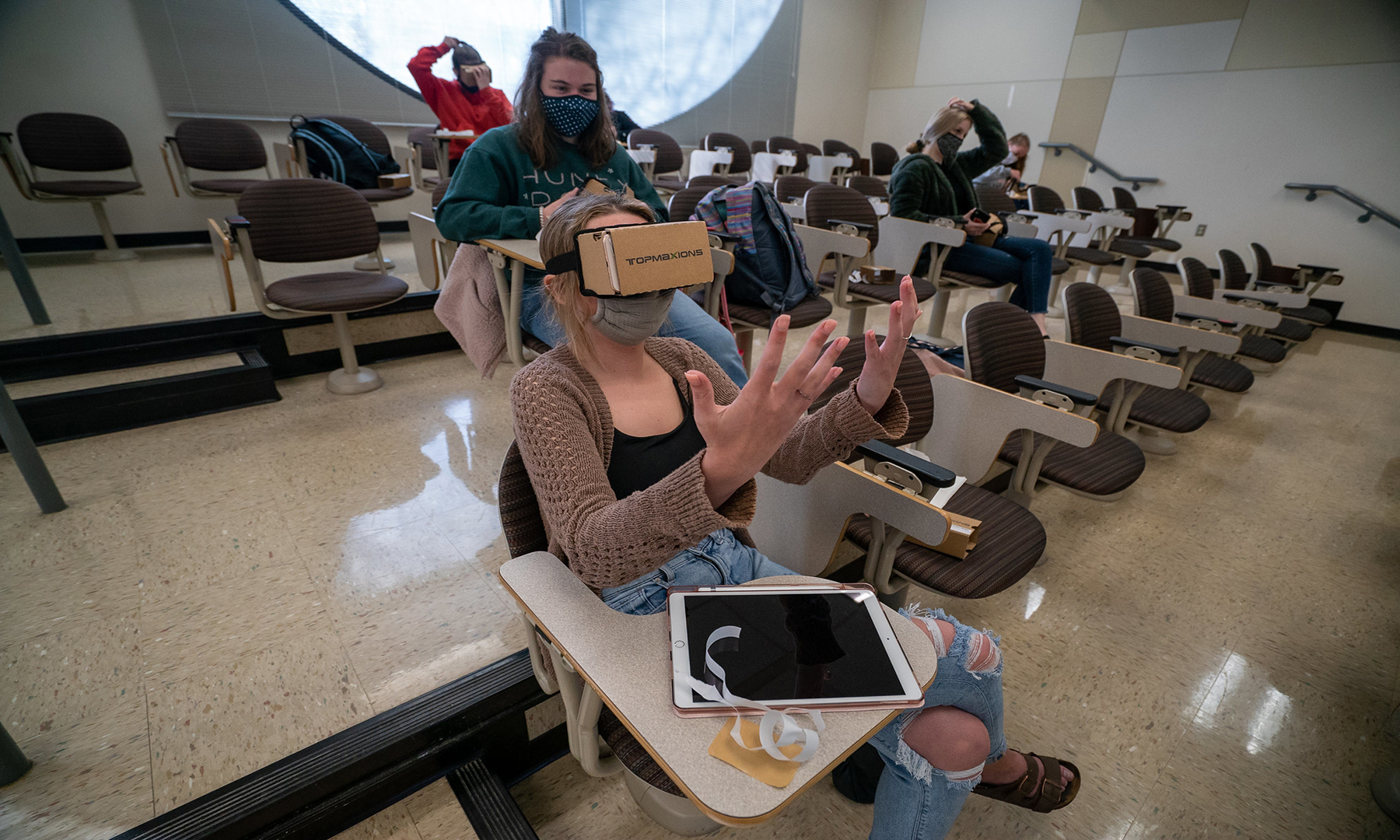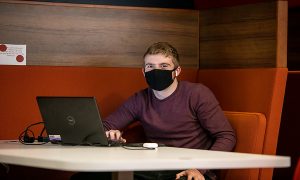Office of Academic Affairs
Transition to Remote Instruction
The transition to remote instruction in spring 2020 went well. The de-densifying took place very quickly, and campus was virtually empty with the exception of the library, which remained open for many hours a week to accommodate students who had technology needs. We allowed students to check out Wi-Fi hotspots, which they could use at home, and several availed themselves of this opportunity.
Deans and chairs employed a highly consultative approach to scheduling classes for the fall. While we prioritized synchronous, interactive learning opportunities, including in-person classes whenever possible, we also solicited faculty input via a survey and meetings with deans or chairs. Faculty could use these opportunities to request special arrangements when, for example, family circumstances made it difficult or impossible for them to come to campus and still maintain the health of themselves and/or their family members. In the end, we managed to schedule some 250 of our classes in person on campus with physical-distancing measures in place. Many other classes were taught with some version of a hybrid model, and a few were taught synchronously via zoom. Faculty and staff had ample opportunity for input on plans for the fall, thanks to the establishment of many re-entry subcommittees on instruction, research, the library, athletics, and more. Some 70 faculty members (about half of the full-time faculty), as well as a number of staff members, were named members of these committees. The subcommittees produced individual reports, which, taken together, amounted to a document totaling more than 100 pages.
To help faculty prepare for the fall, the Center for Teaching, Learning, and Assessment, along with the Library and Accessibility Center, provided 34 workshops, 10 faculty conversations, and a webpage featuring resources faculty could use to design their hybrid courses. The workshops attracted more than 80 non-unique attendees, and the webpage had more than 400 unique views.
Finally, to help keep the IU Kokomo community strong at a time when we could not be together in person, Associate Vice Chancellors Julie Saam and Christina Downey planned and led “Hallway Chats,” which were informal Zoom gatherings of faculty, staff, and administrators.
KEY (Experiential Learning)
The pandemic set some parameters for our signature experiential-learning program, the KEY (“Kokomo Experience and You”), but faculty continued to find ways to engage their students in active, transformative learning experiences. For example, some devised virtual experiences. Hospitality and Tourism Management professor Heather Kennedy-Eden, for example, provided students with virtual-reality goggles and took them on virtual tours of tourist attractions such as Buckingham Palace. Fellow HTM professor Mark Meng arranged for live tours (with safety protocols) of nearby destinations such as the Seiberling Mansion and Kokomo Opalescent Glass. Sport & Recreation Management professor LJ Lee arranged for his students to attend a virtual version of the Indianapolis Colts Sports and Business Forum. In Nursing, faculty were able to attend virtual conferences such as the Indiana Nursing Summit.
New Student Orientation
Thanks to the prompt and thoughtful response of administrators involved with advising and enrollment, we quickly launched virtual new student orientation and wound up ahead on fall registrations, compared to last year.
Student Success
Despite the many challenges created by the pandemic, our fall-to-fall retention for first-time, full-time freshmen reached its highest point in recent memory: 69.8 percent.
Academic Reorganization
After the retirement of John Hughey, head of the Division of Allied Health Sciences, the campus took some time to reconsider the organization of its academic units. After extensive consultation with AHS faculty (including a retreat dedicated to this subject), we decided to dissolve AHS and move the faculty and programs into three existing schools. Radiological Sciences went to the School of Nursing, Health Sciences went to the School of Sciences, and Sport & Recreation Management and Bachelor of Applied Science went to the School of Business.
During the fall semester, deans and other administrators worked with the registrar’s office, the Office of Student Success, and CFO Jared Hayman to implement the necessary structural and administrative changes for these moves. This work will continue in spring 2021. All remaining changes should be effective fall 2021.
New Programs
IU Kokomo was part of some collaborative
online programs that went live in 2020.
M.S.Ed. in Technology for Learning
B.S. in Data Science
B.A. in Sustainability Studies
Furthermore, a new informatics track was added to the B.A.S. degree, and Nursing added a second-degree track. Also, IU Kokomo added new minors in physics, computer science, and sustainability. The new B.A. degree requirements were implemented in fall 2020. A proposal was submitted and preparation is underway for a new bachelor’s degree in rehabilitation science with the first track being the Occupational Therapy Assistant, housed in Nursing. The School of Nursing is preparing to widen its scope with a name and mission change: the new name, approved in 2021, is The School of Nursing and Allied Health Professions.
Enrollment
Some programs have experienced substantial growth in the past year. Computer Science now has 69 majors, up from ___ in fall 2019. Enrollment in the School of Business grew 20.3 percent, from 586 in fall 2019 to 705 in fall 2020. Credit hours grew 22.3 percent from 7386 to 9036, over the same period. The increase was especially large in the online collaborative BSBA, from 26 to 109 students, an increase of 419 percent. The school had its largest class of incoming freshmen: 172 students. In the School of Nursing, with 573 enrolled students in January 2021, credit hours have also steadily increased: Credit hours have increased gradually each year from FY 2016/17 (3889) to FY 2020/21 (4745).


